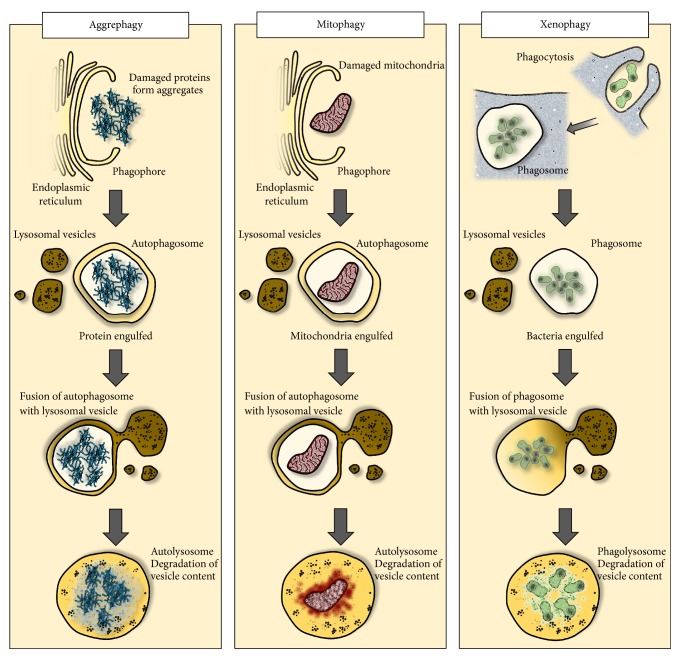Figure 2.
Autophagy plays a critical role in pathogen clearance and host survival. The fibril response as well as oxidative stress resulting from tissue ischemia or immune activation may damage proteins which in turn form toxic aggregates which are cleared by autophagy (“aggrephagy”). Similarly, damaged and dysfunctional mitochondria are targeted for cellular digestion (mitophagy), thus optimising energy generation while diminishing ROS production. Autophagy is also involved in the clearance of intracellular pathogens (xenophagy) in both immune and nonimmune cells. Not demonstrated, autophagic processes are also involved in epitope expression and may provide an alternative form of cell death in viral-infected cells. Also, autophagy may modulate the inflammatory tone by possessing membrane receptors and singling platforms such as the inflammasome.

